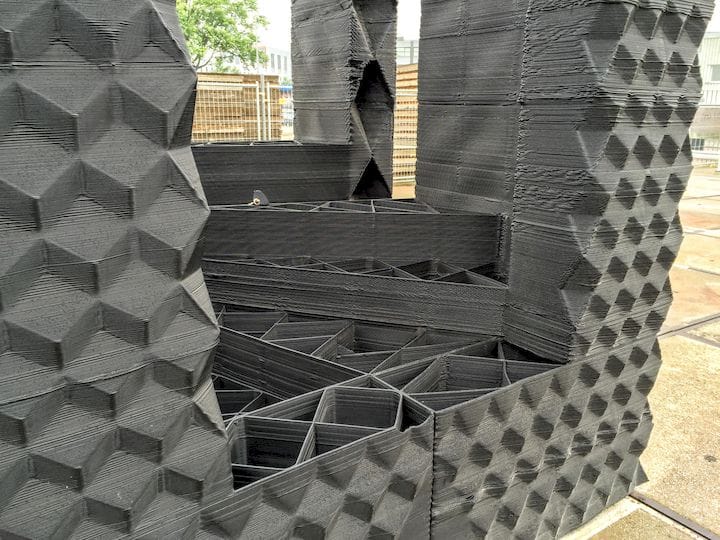![A 3D printed construction experiment in Amsterdam [Source: Fabbaloo]](https://fabbaloo.com/wp-content/uploads/2020/05/image-asset_img_5eb09c4d0a477.jpg)
After several years of experimental construction 3D printing projects, it may be the time for things to get real.
I’ve been quite skeptical of most construction 3D printers for several reasons, mostly due to the entirely inappropriate coverage by mass media, who seem to latch onto stories entitled “3D Printer Prints House In 24 Hours!!!!!!!” at an uncanny rate.
Nothing could be further from the truth, as the real activity was simply 3D printing a concrete foundation and portions of walls in 24 hours. Nothing is ever mentioned about installations of windows, flooring, roofing, surface finishes, electrical, plumbing, HVAC and, well, you get the idea. Construction printers to date have had essentially minimal impact on the true, end-to-end cost and build duration of construction projects.
That’s okay with me; these experiments are necessary to begin the exploration of the construction space. Through these projects people will learn what matters, what works and what doesn’t, as well as what is required.
But afterwards it is time to move forward, and it could be just the right time to do so. A report on TechCrunch describes the sudden interest in technology investments by the construction industry.
Mary Ann Azevedo writes:
”Historically, the multi-trillion-dollar sector has been slow to adopt new technologies, as builders rely on a variety of disparate systems to manage projects, traditional building methods to construct homes and non-smart materials.
But a wave of startups is looking to capitalize on opportunities within the sector. Companies that have developed software solutions aimed at streamlining processes and increasing efficiencies are increasingly common. Prefab construction has evolved thanks to innovation in that space, and 3D printing technology can create homes in a matter of days.”
She goes on to explain that investment in US construction startups rose by over 300% in 2018, with more set to go in 2019.
I must point out, however, that some of the investment made in prior years may not have gone to the best companies, as there were some questionable ventures that simply disappeared. My hope is that the new investment money coming through won’t be wasted in the same way.
What we need to see at this point are startups that leverage 3D printing in an effective manner that produces truly game-changing results in terms of project duration, project cost, or creating “impossible” designs, as has been done in other industries leveraging 3D printing.
Some months ago we wrote a rather long list of aspects that should be considered by construction 3D printer startups. Essentially, the idea is to go beyond basic concrete extrusion and tackle some of the other aspects of building construction in an automated manner.
As it seems to me it is a market ripe for disruption; if you look at any construction site it will be covered with manual labor doing virtually all the work. In today’s 21st century of robotics and automation, why is this still the case? Would it not be possible to design automation solutions — involving 3D printing as well as other technologies — to construct buildings in a rapid, reliable and rapid manner?
It may be that the new investment money could trigger this to happen, perhaps not immediately, but with advanced construction startups that begin heading in that direction.
Are you that startup?
Via TechCrunch











COBOD’s BOD2 construction 3D printer seems to be catching on as the company has made multiple sales of the new device.